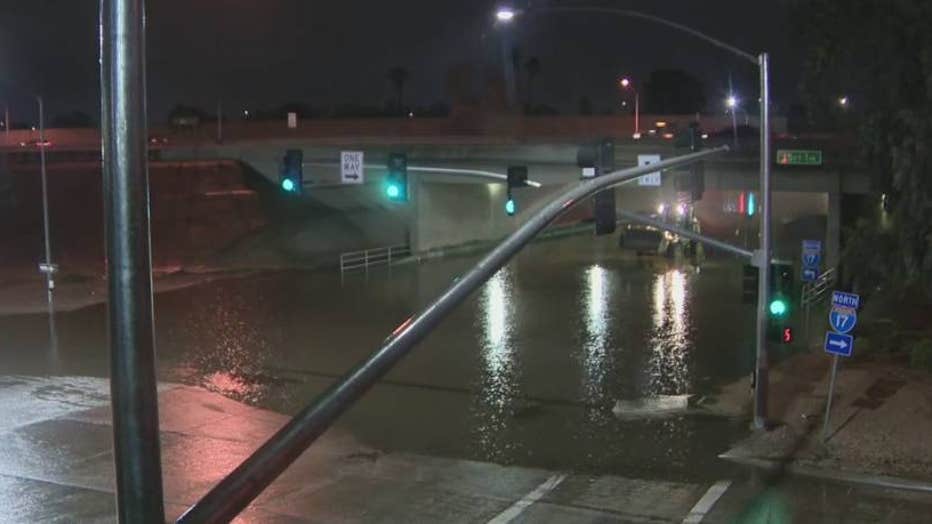How ADOT is prepping for monsoon season this summer

ADOT clearing pump stations as monsoon storms loom
The monsoon season is here, and the Arizona Dept. of Transportation is getting ready and preparing for potential storms. FOX 10's Danielle Miller reports.
PHOENIX - The monsoon season is here, and the Arizona Dept. of Transportation is getting ready and preparing for potential storms.
Cleanup is underway at ADOT's 55 pump stations around the Valley. Clearing the drainage systems is a year-round job, but with monsoon storms on the way, it's a top priority.
Each station has three to four pumps. The pumps can lift more than 12,000 gallons of stormwater per minute.
Litter and trash often winds up in the drainage systems, blocking drain gates and making it more difficult to help in flooding situations.
"Do not litter, do not let the items go out of the back of your pickup truck…it has to go somewhere," said Doug Nintzel with ADOT. "That trash can block drainage gates, it makes it more of a difficult process to keep the freeways dry."

The underpass at Interstate 17 and Greenway in Phoenix was flooded during a storm on July 23, 2021.
As the unpredictable monsoon season kicks off, it's a good reminder to never drive into standing water, slow down on wet roadways, and give yourself plenty of room from the vehicle in front of you.
MORE: 2022 monsoon season in Arizona expected to be above-normal – good news for state agriculture
Other tips to drive safe during monsoon storms, via ADOT:
- Avoid driving into or through a dust storm.
- If you encounter a dust storm, immediately check traffic around your vehicle and begin slowing down.
- Don’t wait until poor visibility makes it difficult to pull off the road - pull aside as soon as possible and exit the highway if you can.
- Don’t stop in a travel lane or in the emergency lane. Look for a safe place to pull completely off the paved portion of the roadway.
- Turn off all vehicle lights, including your emergency flashers. You don’t want other vehicles approaching from behind to use your lights as a guide, possibly crashing into your parked vehicle.
- Set your emergency brake and take your foot off the brake.
- Stay in the vehicle with your seat belts buckled and wait for the storm to pass.
- Drivers of high-profile vehicles should be especially aware of changing weather conditions and travel at reduced speeds.

A different kind of fantasy sport: Predict Arizona's monsoon season, win prizes
During the football season, some fans like to have a little fun and participate in fantasy football. But have you ever heard of fantasy monsoon? FOX 10's Stephanie Olmo reports.

